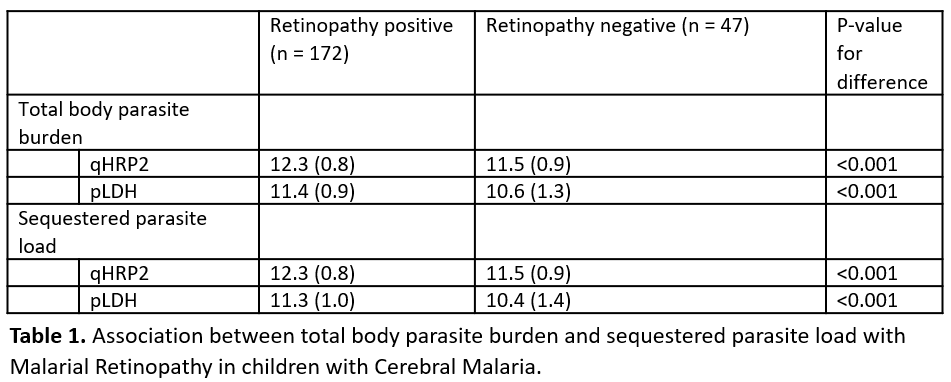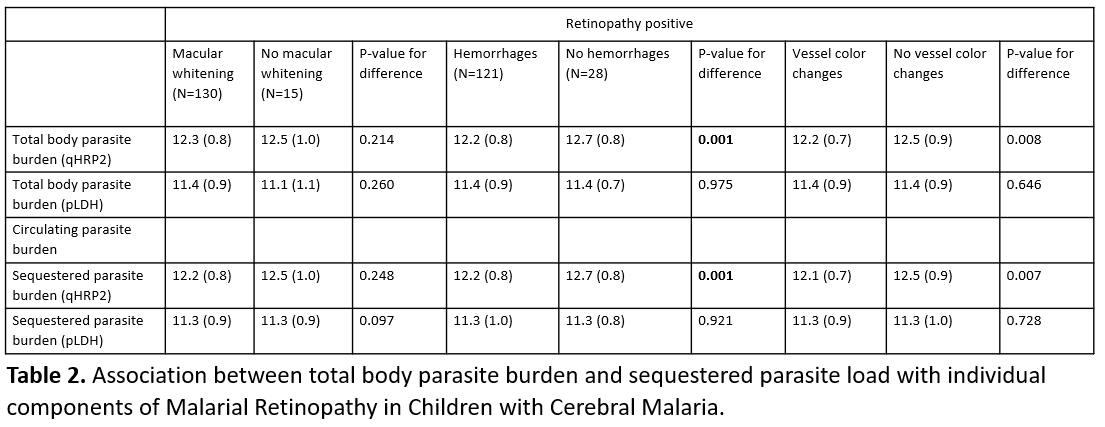Global Neonatal & Children's Health
Session: Global Neonatal & Children's Health 2
500 - Associations between Total Body Parasite Burden and Malarial Retinopathy in Children with Cerebral Malaria
Friday, May 3, 2024
5:15 PM - 7:15 PM ET
Poster Number: 500
Publication Number: 500.605
Publication Number: 500.605

Chiadika Nwanze, MD (she/her/hers)
Resident Physician
Children's National Health System
Washington, District of Columbia, United States
Presenting Author(s)
Background: Of the severe malaria syndromes caused by Plasmodium falciparum infection, cerebral malaria (CM) carries the highest risk for mortality. About two-thirds of children with clinical CM develop retinal abnormalities termed malarial retinopathy, comprising macular whitening, vessel colour changes or haemorrhages. The presence of malarial retinopathy confers a higher risk of mortality in children with CM. The pathogenesis of malarial retinopathy remains poorly understood but sequestration of parasitised erythrocytes in retinal vasculature has been previously hypothesised to produce vessel colour changes observed on ophthalmoscopy.
Objective: Therefore, our study aimed to investigate the association between the individual components of malarial retinopathy and sequestration of parasitised erythrocytes in retinal vasculature of children with CM.
Design/Methods: Using clinical data and archived biospecimens from children 6 months – 13 years old admitted to Queen Elizabeth Central Hospital between January 2010 and March 2023, we estimated total body parasite burden using plasma levels of parasitic lactate dehydrogenase (pLDH) and quantitative histidine-rich protein 2 (qHRP2). We estimated sequestered parasite load using the difference between total body parasite burden and circulating parasite load.
Results: Children with retinopathy-positive CM (n = 172) had significantly higher total (p-value < 0.001) and sequestered (p-value < 0.001) body parasite burdens compared to children with retinopathy-negative CM (n = 42). Children with retinal haemorrhages had significantly lower total body parasite burden compared to children without retinal haemorrhages (p-values < 0.001).
Conclusion(s): These findings provide evidence that higher intensity of sequestration is associated with malarial retinopathy in children with CM, but not with individual components of malarial retinopathy.


